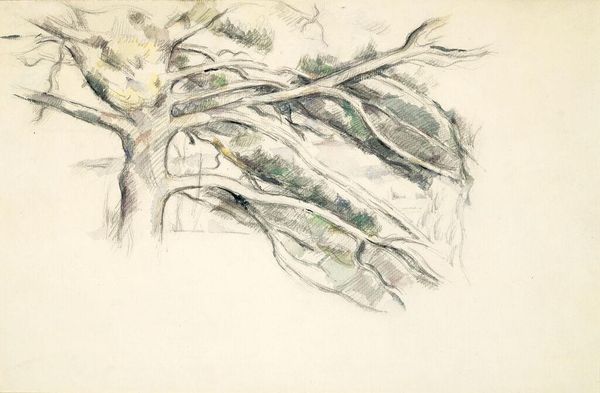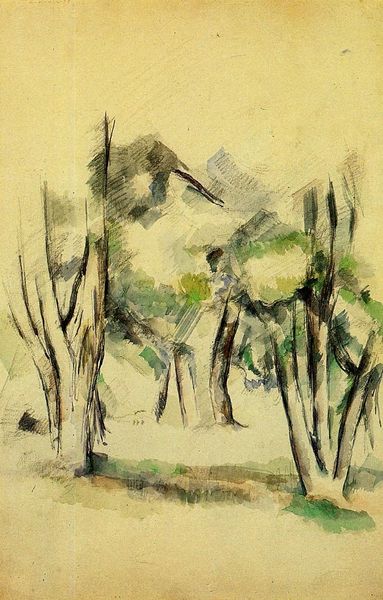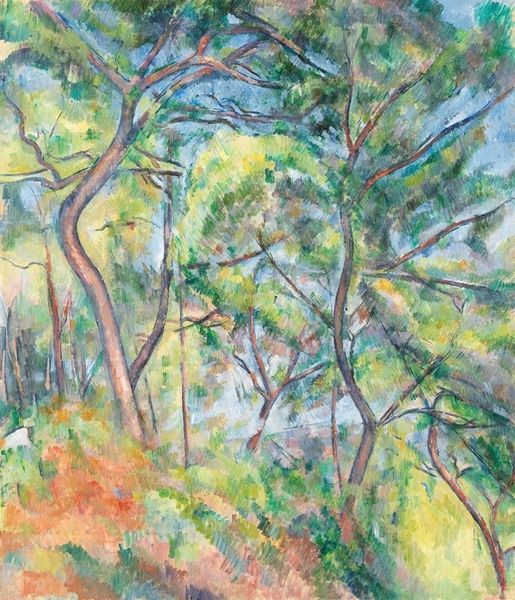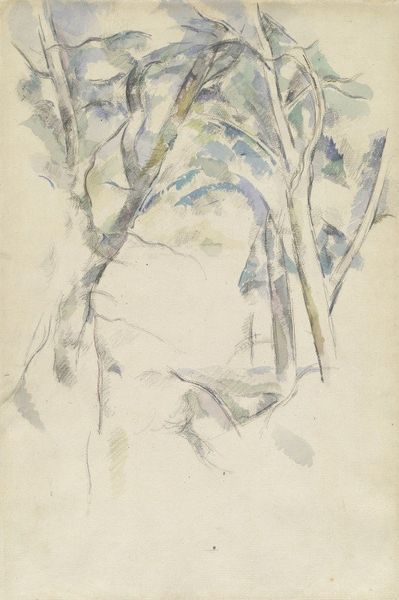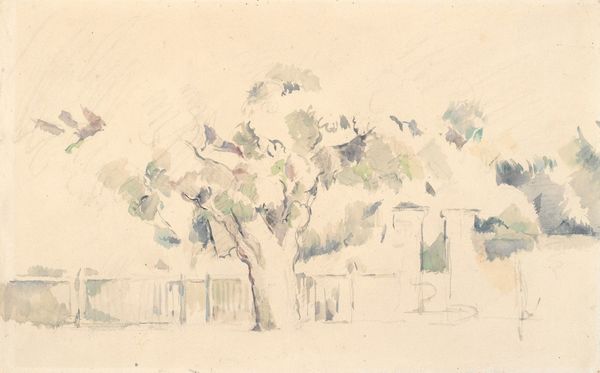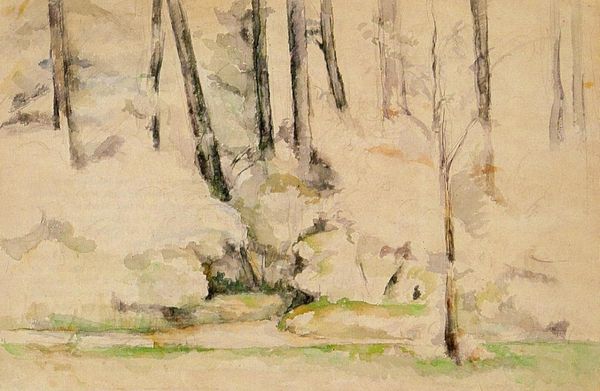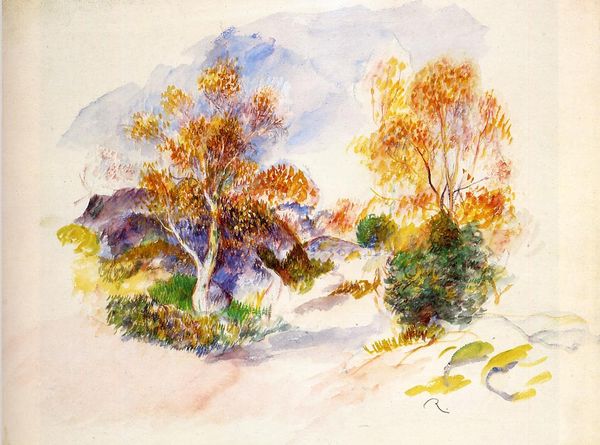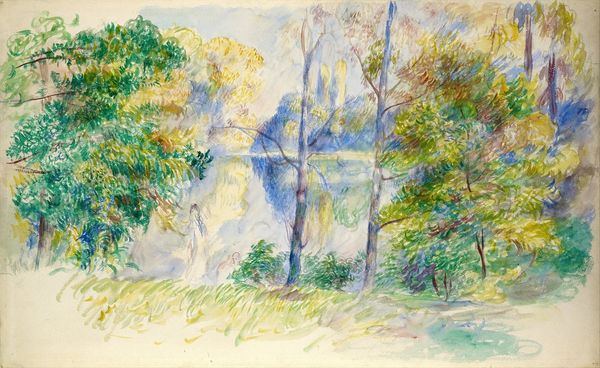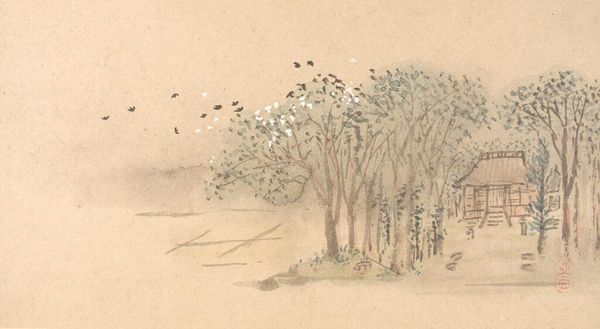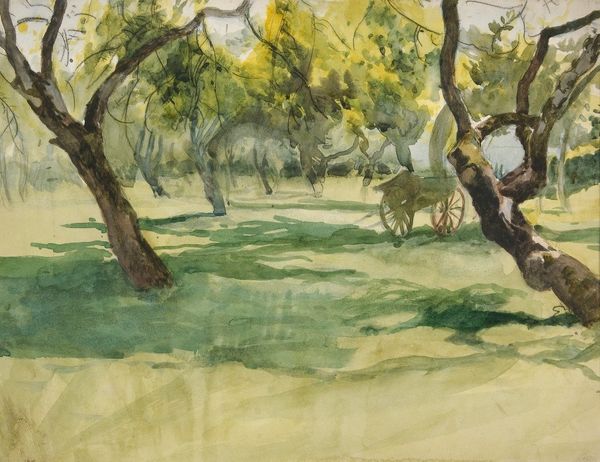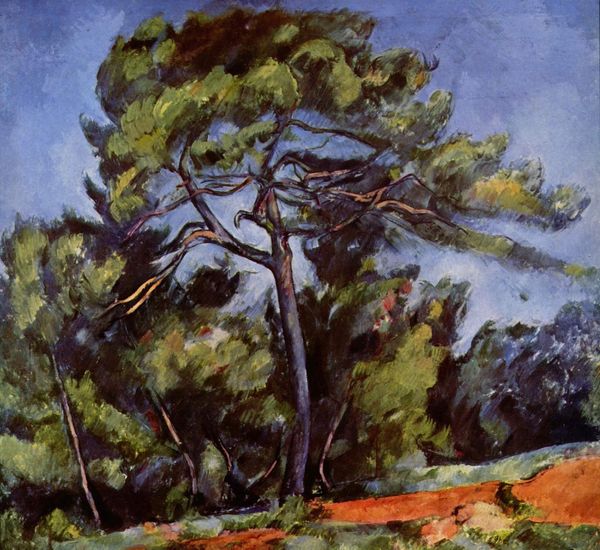
Copyright: Public domain
Paul Cézanne painted this watercolor study, Large Pine, with fluid brushstrokes on paper. Notice how the thin washes of color allow the paper to breathe through, creating a sense of light and air. The brushwork itself is key here. Cézanne wasn't trying to replicate reality, but rather to analyze it. He built up the image through layers of parallel marks, a kind of visual shorthand for the way light falls on form. Watercolor was traditionally seen as a preparatory medium, a quick way to capture impressions before committing to a more "serious" oil painting. Yet Cézanne elevates it here, demonstrating its capacity for nuanced observation. This connects to a larger theme in his work: a rejection of academic hierarchies. For Cézanne, the act of seeing and recording was paramount, regardless of the materials used. He found truth not in surface appearances, but in the underlying structure of the world around him. So, when you look at this image, consider the labor involved not just in rendering the tree, but in elevating the status of a humble material.
Comments
No comments
Be the first to comment and join the conversation on the ultimate creative platform.
